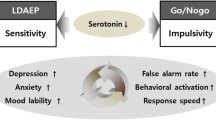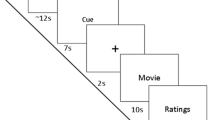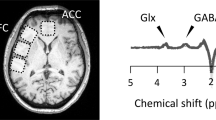Objective. To study the characteristics of the early stages of sensory (inhibition of the P50 event-related potential) and sensorimotor (prestimulus modification of the acoustic startle reaction (ASR)) information processing in patients with schizophrenia taking account of their behavioral characteristics. Materials and methods. Two groups of patients were investigated using oculography and electroencephalography: aggressive patients (group A, 44 subjects) and nonaggressive patients (group NA, 27 subjects); a control group of 48 healthy subjects were also studied. Patients’ mental status was assessed on the PANSS. Results and conclusions. These studies identified features characteristic of schizophrenia patients, particularly increases in the latent period of ASR, deficiency of prestimulus inhibition (PSI) (with delay intervals of 60 msec), and inhibition of P50 relative to normal. The aggressivity factor influenced the lateralized features of these deviations in ASR only in group A. Group NA showed an increase in baseline ASR amplitude and a decrease in prestimulus ASR amplitude. Analysis of P50 showed a significant increase in amplitude and a decrease in latency in responses to the second stimulus in group NA. A significant increase on the G14 scale (Poor impulse control) and the nature of its correlation with ASR and P50 measures in group A suggested that increased impulsivity was an important factor in aggressive behavior in the cohort of patients studied here. The characteristics of ASR and P50 typical of group NA provided evidence of increased sensitivity to external stimuli, which may be associated with personality features inhibiting aggression. These results led to the conclusion that measures of the early stages of information processing can be regarded as potential predictors of aggressive behavior in schizophrenia patients.
Similar content being viewed by others
References
M. M. Mal’tseva and V. P. Kotov, Dangerous Actions by Mental Patients. Psychological Mechanisms and Prophylaxis, Meditsina, Moscow (1995).
M. C. Brower and B. H. Price, “Neuropsychiatry of frontal lobe dysfunction in violent and criminal behavior: a critical review,” J. Neurol. Neurosurg. Psychiatry, 71, 720–726 (2001), https://doi.org/10.1136/jnnp.71.6.720.
M. J. Hoptman, J. Volavka, E. M. Weiss, et al., “Quantitative MRI measures of orbitofrontal cortex in patients with chronic schizophrenia or schizoaffective disorder,” Psychiatry Res., 2, 133–145 (2005), https://doi.org/10.1016/j.pscychresns.2005.07.004.
J. Volavka and L. Citrome, “Heterogeneity of violence in schizophrenia and implications for long-term treatment,” Int. J. Clin. Pract., 8, 1237–1245 (2008), https://doi.org/10.1111/j.1742-1241.2008.01797.x.
D. L. Braff, “Information processing and attention dysfunctions in schizophrenia,” Schizophr. Bull., 2, 233–259 (1993), https://doi.org/10.1093/schbul/19.2.233.
A. Fresán, R. Apiquian, M. García-Anaya, et al., “The P50 auditory evoked potential in violent and non-violent patients with schizophrenia,” Schizophr. Res., No. 1–3, 128–136 (2007), https://doi.org/10.1016/j.schres.2007.09.017.
M. E. Dawson, A. M. Shell, E. A. Hazlett, et al., “On the clinical and cognitive meaning of impaired sensorimotor gating in schizophrenia,” Psychiatry Res., 3, 187–197 (2000), https://doi.org/10.1016/j.schres.2007.09.017.
V. Kumari, M. Das, S. Hodgins, et al., “Association between violent behaviour and impaired prepulse inhibition of the startle response in antisocial personality disorder and schizophrenia,” Behav. Brain Res., 1, 159–166 (2005), https://doi.org/10.1016/j.bbr.2004.08.021.
M. Davis, “The mammalian startle response,” in: Neural Mechanisms of the Startle Behavior, R. C. Eaten (ed.), Plenum Press, New York (1984), https://doi.org/10.1007/978-1-4899-2286-1_10.
J. K. Wynn, M. E. Dawson, A. M. Schell, et al., “Prepulse facilitation and prepulse inhibition in schizophrenia patients and their unaffected siblings,” Biol. Psychiatry, 5, 518–523 (2004), https://doi.org/10.1016/j.biopsych.2003.10.018.
L. E. Adler, A. Olincy, M. Waldo, et al., “Schizophrenia sensory gating and nicotinic receptors,” Schizophr. Bull., 24, 198–202 (1998), https://doi.org/10.1093/oxfordjournals.schbul.a033320.
R. Freedman, L. E. Adler, M. Myles-Worsley, et al., “Inhibitory gating of an evoked response to repeated auditory stimuli in schizophrenic and normal subjects: human recordings, computer simulation, and an animal model,” Arch. Gen. Psychiatry, 53, 1114–1121 (1996), https://doi.org/10.1001/archpsyc.1996.01830120052009.
B. Oranje, M. A. Geyer, K. B. Bocker, et al., “Prepulse inhibition and P50 suppression: commonalities and dissociations,” Psychiatry Res., 143, 147–158 (2006), https://doi.org/10.1016/j.psychres.2005.11.002.
B. I. Turetsky, W. B. Bilker, S. J. Siegel, et al., “The profile of auditory information processing deficits in schizophrenia,” Psychiatry Res., No. 1–2, 27–37 (2009), https://doi.org/10.1016/j.psychres.2008.04.013.
S. N. Mosolov, Psychometric Assessment Scales for the Symptomatology of Schizophrenia and the Concept of Positive and Negative Disorders, Novyi Tsvet, Moscow (2001).
D. Tsuang, M. Esterberg, D. Braff, et al., “The Consortium on the Genetics of Endophenotypes in Schizophrenia: model recruitment, assessment, and endophenotyping methods for a multisite collaboration,” Schizophr. Bull., 1, 33–48 (2007), https://doi.org/10.1093/schbul/sbl044.
M. T. Nagamoto, L. E. Adler, Waldo M., and R. Freedman, “Gating of auditory response in schizophrenics and normal controls. Effects of recording site and stimulation interval on the P50 wave,” Schizophr. Bull., 4, 31–40 (1991).
M. J. Hoptman, “Impulsivity and aggression in schizophrenia: a neural circuitry perspective with implications for treatment,” CNS Spectr., 3, 280–286 (2015), https://doi.org/10.1017/S1092852915000206.
S. M. Stahl, “Deconstructing violence as a medical syndrome: mapping psychotic, impulsive, and predatory subtypes to malfunctioning brain circuits,” CNS Spectr., 19, No. 5, 357–365 (2014), https://doi.org/10.1017/S1092852914000522.
K. Derefinko, C. N. De Wall, A. V. Metze, et al., “Do different facets of impulsivity predict different types of aggression?” Aggress. Behav., 3, 223–233 (2011), https://doi.org/10.1002/ab.20387.
B. B. Quednow, K. Ejebe, M. Wagner, et al., “Meta-analysis on the association between genetic polymorphisms and prepulse inhibition of the acoustic startle response,” Schizophr. Res., 198, 52–59 (2018), https://doi.org/10.1016/j.schres.2017.12.011.
N. R. Swerdlow, D. L. Braff, and M. A. Geyer, “Sensorimotor gating of the startle reflex: what we said 25 years ago, what has happened since then, and what comes next,” J. Psychopharmacol., 11, 1072–1081 (2016), https://doi.org/10.1177/0269881116661075.
Z. Storozheva, A. V. Kirenskaya, V. Y. Novototsky-Vlasov, et al., “Startle modification and P50 gating in schizophrenia patients and controls: Russian population,” Span. J. Psychol., 19, E8 (2016), https://doi.org/10.1017/sjp.2016.1.
K. Howner, S. F. Eskildsen, H. Fischer, et al., “Thinner cortex in the frontal lobes in mentally disordered offenders,” Psychiatry Res., No. 2–3, 126–131 (2012), https://doi.org/10.1016/j.pscychresns.2011.12.011.
Author information
Authors and Affiliations
Corresponding author
Additional information
Translated from Zhurnal Nevrologii i Psikhiatrii imeni S. S. Korsakova, Vol. 120, No. 2, Iss. 1, pp. 45–52, February, 2020.
Rights and permissions
About this article
Cite this article
Kirenskaya, A.V., Storozheva, Z.I., Ilyushina, E.A. et al. Comparative Analysis of Indicators of the Early Stages of Sensory and Sensorimotor Information Processing in Aggressive and Nonaggressive Schizophrenia Patients. Neurosci Behav Physi 50, 1119–1126 (2020). https://doi.org/10.1007/s11055-020-01013-x
Received:
Accepted:
Published:
Issue Date:
DOI: https://doi.org/10.1007/s11055-020-01013-x




